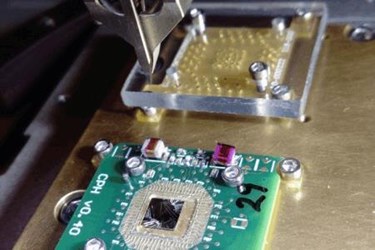Microsoft Unveils Quantum Programming Language
By Jof Enriquez,
Follow me on Twitter @jofenriq

Microsoft has announced at its Ignite conference a new programming language designed to work both on present quantum simulators and upcoming quantum computers the company is building.
The quantum programming language is designed to work with Microsoft's Visual Studio integrated development environment (IDE), which is already familiar among developers of programs for the Windows operating system, websites, and mobile apps. Developers can perform common tasks, such as debugging and auto-complete, but will also have the ability to call quantum subroutines, and to write sequences of programming instructions for a complete quantum program, announced Microsoft.
Individual users can simulate problems that require up to 30 logical qubits using their own personal computers, while select enterprise clients (using the Azure cloud computing platform) get 40 qubits of power.
Microsoft wants developers and programmers to get up to speed with quantum code today, before the actual quantum computers come into stores. The company is building a quantum computer itself, based on a topological qubit that company scientists believe is more stable than fragile qubits prone to processing errors.
“The same code that you’re running today in simulation, you can run tomorrow on our quantum computer,” said Krysta Svore, Research Manager of Quantum Architectures and Computation (QuArC) Group at Microsoft Research, a team of leading quantum computer scientists and engineers at the company.
Craig Mundie, Microsoft’s former chief research and strategy officer, says a quantum computer's earliest impact will be to advance artificial intelligence-based technologies.
“Even if everything else was the same, Cortana would improve 30 times faster,” said Mundie, referring to Microsoft's personal digital assistant, reported Engadget.
At the conference, Microsoft executives showed a palm-sized circuit board, a piece of hardware that they say is key to controlling Majorana-powered qubits that theoretically are more reliable than the fragile qubits other companies and groups are working on currently, according to Wired.
The company also is building a system architecture in which qubits operate at just a hair above absolute zero, or 30 millikelvin — cold enough to help prevent quantum decoherence, or the loss of information as qubits interact with the environment.
Microsoft says it ultimately will offer a "full-fledged topological quantum computing system" that "includes everything from hardware capable of consistently running calculations that require tens of thousands of logical qubits to a complete software stack that can program and control the quantum computer."
“We’re doing everything,” said Todd Holmdahl, the Microsoft corporate VP in charge of the quantum effort, “from the physics to the control plane to the software that runs the computer to the algorithms that you need to do interesting things like quantum chemistry, to the applications for personalized medicine or helping with climate change.”
Despite being an early participant, and later, the dominant player, in the personal computer industry, Microsoft is playing catch-up with tech rivals in building commercially available, general purpose quantum computers.
IBM in May unveiled the IBM Q system, which allows developers to begin building interfaces between its existing five quantum bit (qubit) cloud-based quantum computer and classical computers. Canadian company D-Wave Systems has a 1,152-qubit system that is being used by Google and Lockheed Martin. Google itself is working on a prototype quantum computer that features a hybrid architecture using superconducting chips.
